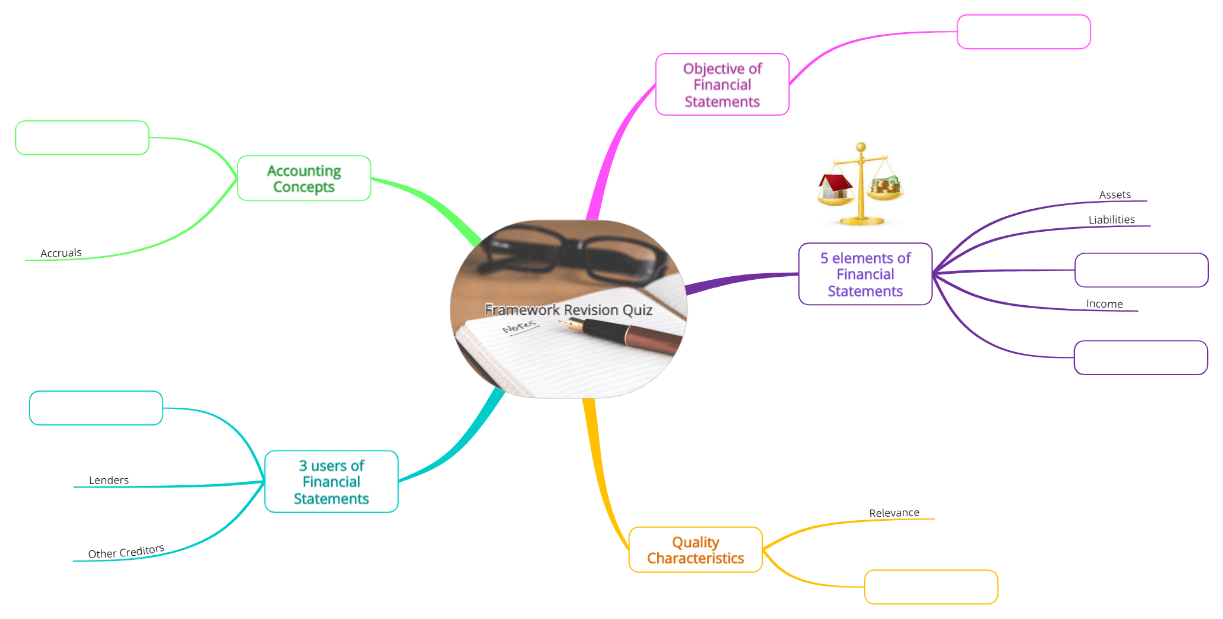January 24, 2020 (Updated February 22nd, 2023)
6 Mind Mapping examples for students and teachers
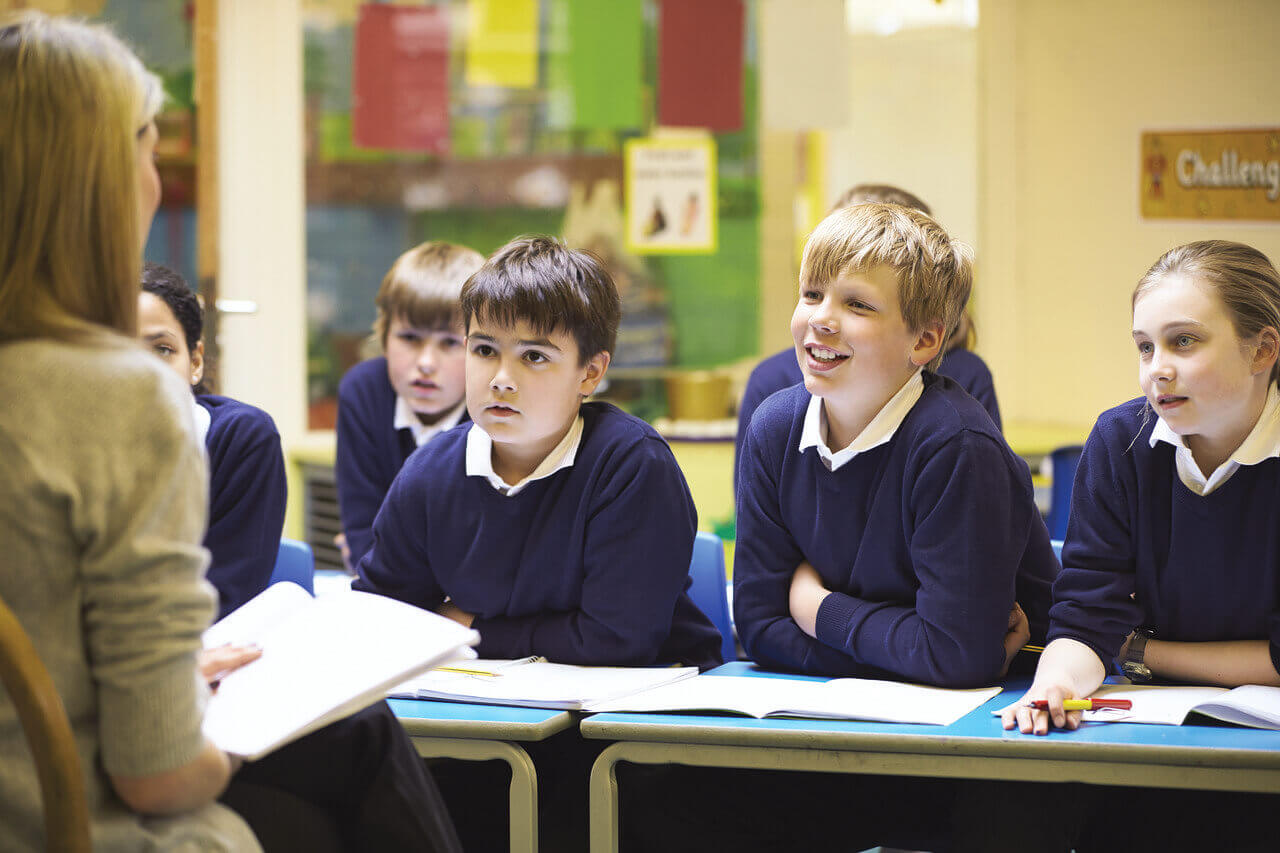
When a new school year is upon you, what better way to get off to a flying start by improving your organization, increasing your creativity and boosting your memorization with Mind Maps? Whether you’re a teacher or a student of any age, Mind Mapping is a valuable tool that has been proven to help with each of these skills due to the fact that they help to break down complex information into smaller, easier-to-consume chunks.
They also utilize different colors, shapes and imagery, which makes them extremely useful for visual thinkers or those who struggle to retain and recall information. So, with so many benefits being offered by this creative thinking technique, why not take advantage of Mind Maps in school?
There are various ways Mind Maps can be used in the classroom. For students, this could be to plan and structure work, such as essays, stories, reports and presentations, or even Mind Map school subjects to create revision aids for exams. For teachers, Mind Maps can be used to plan meetings, structure lesson plans, provide feedback to students, produce useful resources to be used in lessons, and even create revision aids for their class.
To help you get started, we have put together a number of helpful Mind Mapping examples for students and teachers alike. Use them as templates to recreate in Ayoa or take these ideas to be inspired to create your own unique Mind Maps with our software!
1. When I grow up…
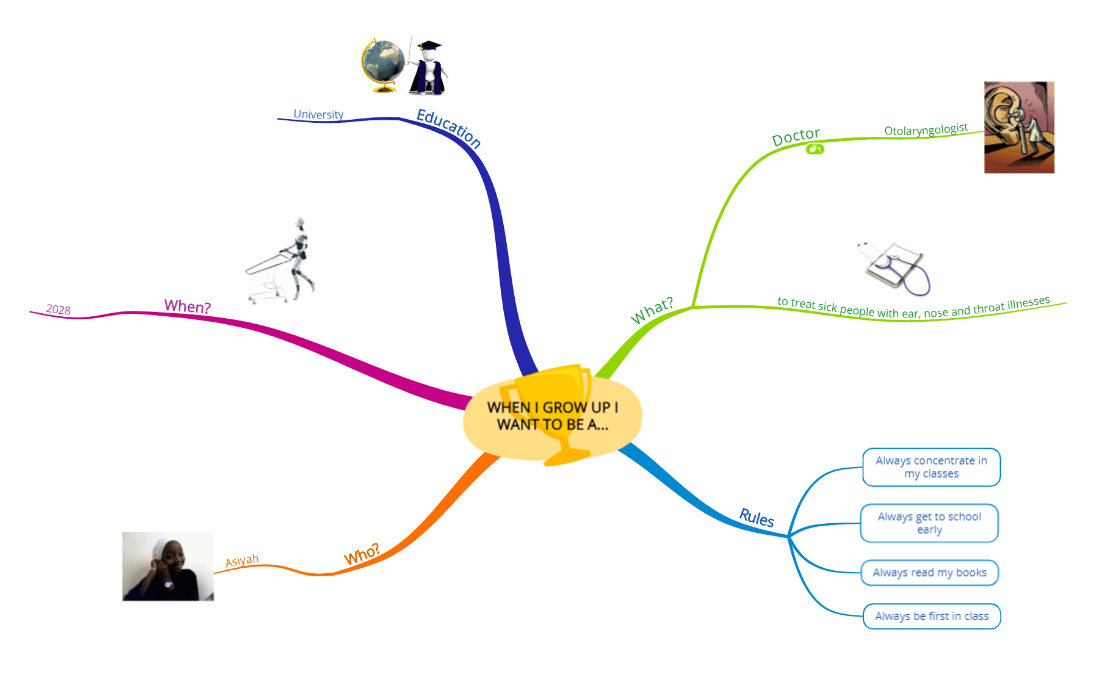
View larger image The aim of school is to prepare students for their future by giving them the vital skills they need to progress, as well as igniting passions in various subject areas and aspects of work, such as creative writing. Get your students thinking about their goals early on by setting them the task of Mind Mapping what they want to be when they grow up. This activity works well with students of all age groups as it encourages them to engage in critical thinking. The amount of detail they go into within their map can be easily adjusted depending on their education level. Aspects of the Mind Map your students will need to consider include the timeline (when do they expect to achieve their goal?), requirements for their dream job (do they need certain qualifications?), and the steps they need to take to reach their targets. View larger image Parents’ evening has a habit of creeping up on teachers – and before you know it, you’re writing a ton of reports in a mad rush. This can be extremely stressful, confusing and (not to mention) time-consuming, so why not get a head start and create a Mind Map for each child at the start of the school year to help you keep track of their individual progress? As the term continues, add branches to each map to build up a picture of students’ performance and development. The Mind Map itself will serve as a fantastic visual reference when discussing progress at parent’s evening. It could even be provided to the student to give them guidance on what areas they need to improve on, and what they can do to ensure this is achieved. Quick tip: Try using green branches to signify strengths, red branches to signify weaknesses, and amber branches to signify areas for improvement. View larger image Throughout the various stages of education, essays and reports are key tasks for homework, and in many subjects, they’re also a vital component of end of year exams. Essays encourage you to develop a disciplined and authoritative approach to writing, think critically, and organize your thinking and the information you already know on a topic. Instill good habits in your students from a younger age by providing them with a Mind Map of useful phrases for supporting and contradicting arguments in essays, reports, and other written work. Throughout the year, students can build on the map as they encounter new and useful phrases that can be used in their work. View larger image Whether your students are aged 6, 16 or 60, everyone needs to start somewhere when it comes to learning a different language. Allow your students to get to grips with the fundamentals of a new language by consolidating key terms into Mind Map summaries. For example, these maps could include tenses, verbs, animals, numbers, family members, and more. Once you have done this, you can issue it every year to your new group of students as a basis to start off from. View larger image At the start of every school term, it’s time to recap the basics and ensure that your students are ready to tackle the tasks that each new term brings. If your class is younger and still learning the basics of reading and writing, it can be helpful to use this Mind Map as a classroom reminder of the key principles of English grammar. As your students refer to the Mind Map more, see whether their writing style starts to change as they include more complex grammar in each writing task! View larger image Box branches in Ayoa are available when creating both Organic Mind Maps and Speed Mind Maps, and they serve multiple purposes. However, perhaps the most original and interactive use is for fill-in-the-blank exercises. These work for every topic or language, and serve as templates that can be used time and time again. As a fun classroom activity, ask your students what they think each of the blank spaces should be filled in with. Project Ayoa onto the board and at the end of the exercise, fill in the box branches with the correct answers so everyone can learn them. Quick tip: Another way to complete this activity is by printing off the map and issuing it to your students to have a crack at filling in on their own. If you think the questions are too tough, you can try including images as hints. Ayoa Mind Maps are a great educational tool, serving as an ideal aid for forming lesson plans, exam revision materials, as well as plans for essays, reports, presentations and other work. As well as giving you the ability to easily share your Mind Maps with others, using a digital Mind Mapping tool like Ayoa also makes the process quicker by enabling you to make edits without sacrificing the neatness of your map. If you’re looking for more Mind Map inspiration, check out our Mind Map gallery. Ready to start creating your own Mind Maps? Whether you’re a student or a teacher, you can try Ayoa for free today! And don’t forget, we offer a 35% discount for students and educators!
2. Student progress review
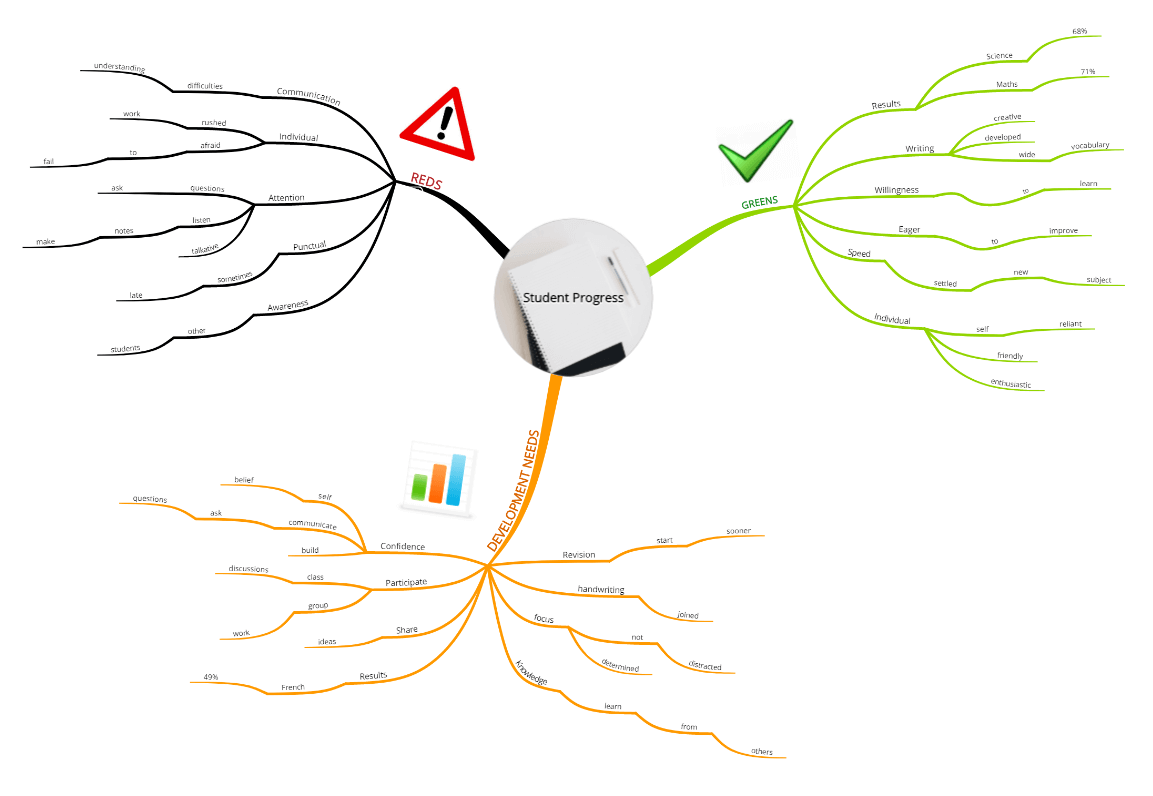
3. Writing an essay
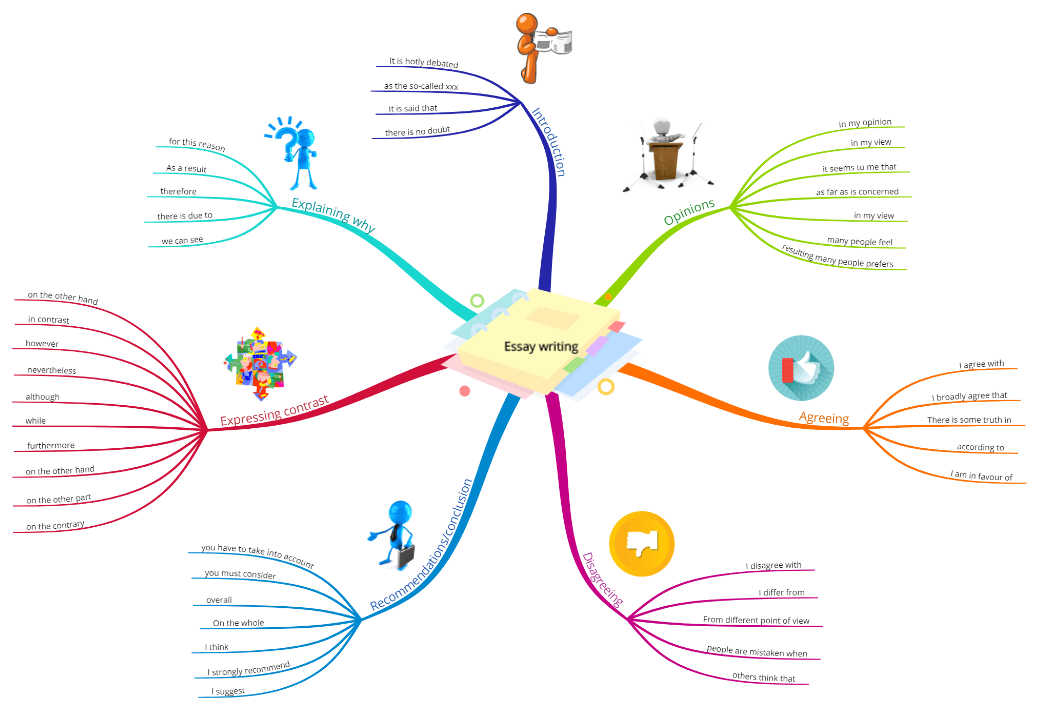
4. Language for beginners
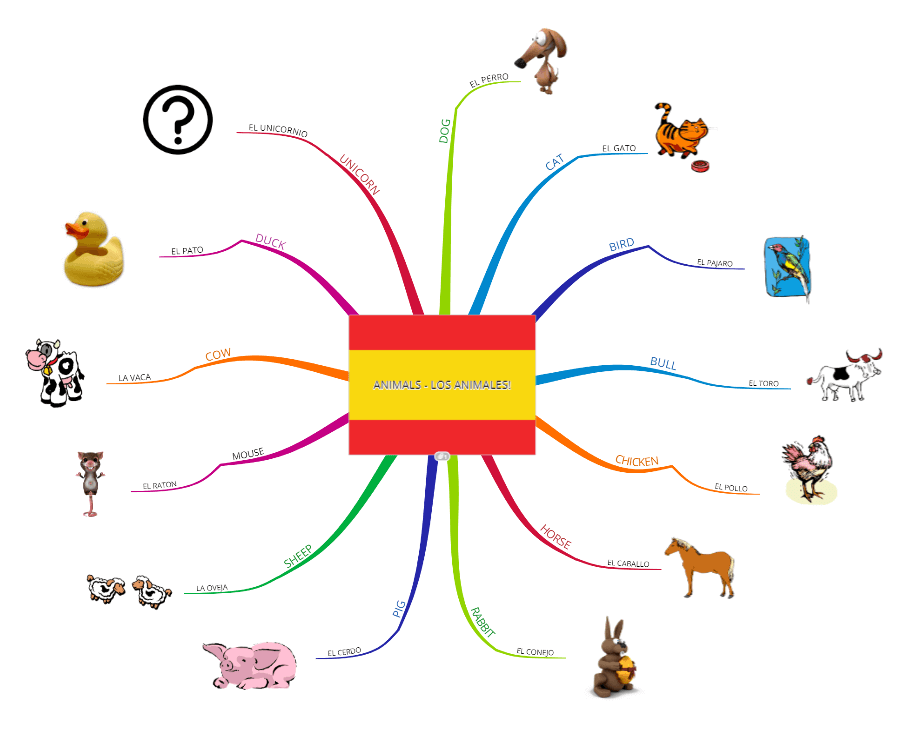
5. Basic English grammar
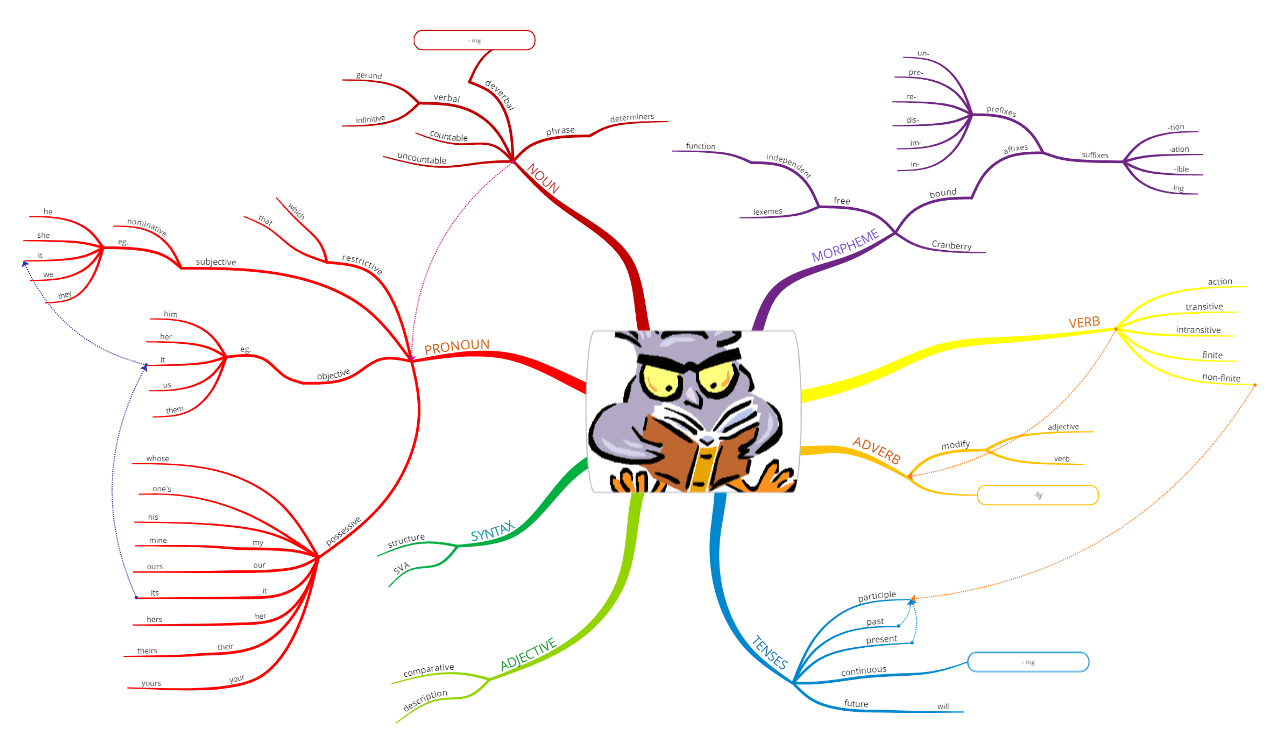
6. ‘Fill in the blank’ exercise
